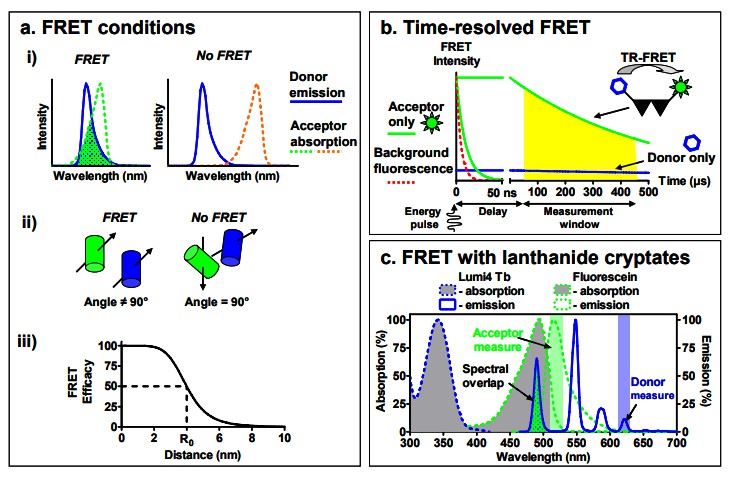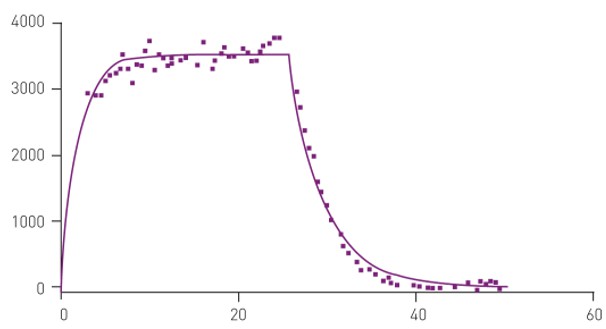Time-Resolved Fluorescence Resonance Energy Transfer (TR-FRET) is a detection technique that combines time-resolved fluorescence (TRF) with Förster's Resonance Energy Transfer (FRET). TR-FRET is well-applied in the field of binding events analysis and high-throughput drug screening. Förster's resonance energy transfer describes the energy transfer between two fluorophores and is named after the German scientist Theodor Förster who originally proposed the theory of resonance energy transfer. Energy transfer depends on two conditions. Firstly, the spatial proximity between the donor and acceptor must be in the range of 20-90 Å. Secondly, an overlap between the donor's emission spectrum and the acceptor's excitation spectrum is required.
In biology, genetically encoded fluorescent proteins are commonly used, including green fluorescent protein (GFP), red fluorescent protein (RFP), cyan fluorescent protein (CFP), and yellow fluorescent protein (YFP). However, standard FRET is susceptible to background noise derived from scattered excitation light and autofluorescence, making it difficult to obtain highly sensitive measurements. Time-resolved FRET uses time-resolved fluorescence and introduces a time-delayed detection that eliminates background noise. Relying on resonance energy transfer taking place between a lanthanide and short-lived fluorophore, TR-FRET offers greater stability and specificity with significantly less buffer or medium interference. Due to these advantages, TR-FRET is widely used to study kinase assays, cell signaling pathways, protein-protein interactions, DNA-protein interactions, and receptor-ligand binding.
 Figure 1. Principles of FRET and TR-FRET (Cottet, M.; et al. 2011)
Figure 1. Principles of FRET and TR-FRET (Cottet, M.; et al. 2011)

As a protein research expert, Profacgen provides TR-FRET with high sensitivity and versatility. In the experiment, lanthanide emission does hardly bleach, which can be compatible with different reagents and experimental conditions. Choosing TR-FRET means no in-between washing steps are required and can be run as a simple add-and-read assay. The process is the easy and time-saving, so this technique is often used for automated high-throughput screening.
Our platform is equipped with a powerful microplate reader to support high-throughput operations, compatible with 384-, 1536- and 3456-well microplates, and supports miniaturized samples while maintaining accuracy and reproducibility. Combining our sophisticated equipment with dedicated hardware/software, it is easy to resolve binding events and calculate Kon and Koff rates, and we can also customize efficient solutions according to customer needs.
Profacgen has accumulated lots of experience in time-resolved FRET technology. Our professional technical team can provide customers with high-quality FRET and TR-FRET analysis and related featured services. Our competitive prices and extensive expertise have earned us the trust of our collaborators. Contact us to find out how Profacgen could be of assistance.
References
Fill out this form and one of our experts will respond to you within one business day.